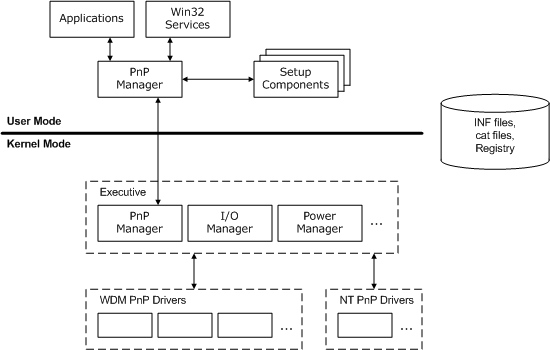Note
Access to this page requires authorization. You can try signing in or changing directories.
Access to this page requires authorization. You can try changing directories.
The following figure shows the components that work together to support PnP.

The PnP manager has two parts: the kernel-mode PnP manager and the user-mode PnP manager. The kernel-mode PnP manager interacts with operating system components and drivers to configure, manage, and maintain devices. The user-mode PnP manager interacts with user-mode setup components, such as Class Installers, to configure and install devices. The user-mode PnP manager also interacts with applications to, for example, register an application for notification of device changes and notify the application when a device event occurs.
PnP drivers support the physical, logical, and virtual devices on a machine. The term "PnP driver" refers to any Windows driver that supports the interfaces described in this section. While most PnP drivers are also WDM drivers and thus source-compatible across Windows platforms, a few drivers support PnP without fully implementing WDM.
All drivers should support PnP and power management. If a single driver doesn't support PnP and power management, it constrains the PnP and power management support of the system as a whole.
See Device and Driver Installation for information about device and driver setup, including (INF) files, CAT files, and the registry.